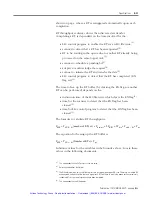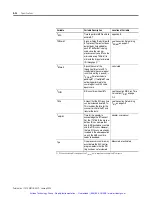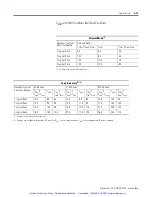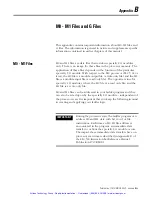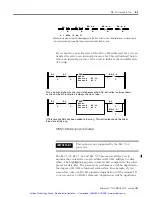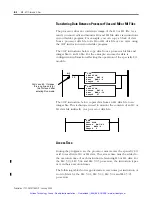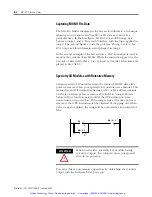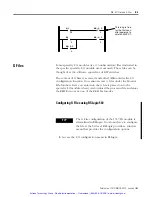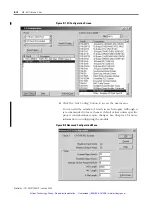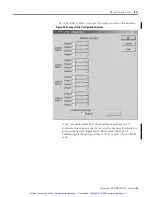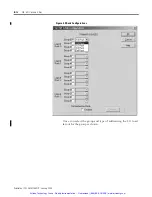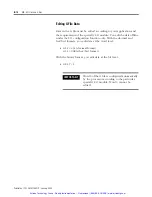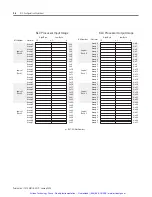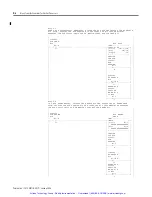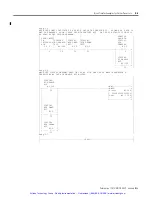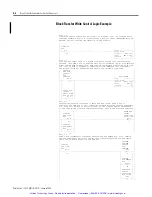
Publication 1747-UM013B-EN-P - January 2005
B-8
M0 - M1 Files and G Files
Capturing M0-M1 File Data
The first two ladder diagrams in the last section illustrate a technique
allowing you to capture and use M0 or M1 data as it exists at a
particular time. In the first figure, bit M0:2.1/1 could change state
between rungs 1 and 2. This could interfere with the logic applied in
rung 2. The second figure avoids the problem. If rung 1 is true, bit
B3/10 captures this information and places it in rung 2.
In the second example of the last section, a COP instruction is used to
monitor the contents of an M1 file. When the instruction goes true, the
6 words of data in file #M1:4.3 is captured as it exists at that time and
placed in file #N10.0.
Specialty I/O Modules with Retentive Memory
Certain specialty I/O modules retain the status of M0-M1 data after
power is removed. See your specialty I/O module user’s manual. This
means that an OTE instruction having an M0 or M1 address remains
on if it is on when power is removed. A “hold-in” rung as shown
below will not function as it would if the OTE instruction were
non-retentive on power loss. If the rung is true at the time power is
removed, the OTE instruction latches instead of dropping out; when
power is again applied, the rung will be evaluated as true instead of
false.
You can achieve non-retentive operation by unlatching the retentive
output with the first pass bit at powerup:
] [
B3
0
( )
M0:2.1
1
] [
M0:2.1
1
ATTENTION
When used with a speciality I/O module having
retentive outputs, this rung can cause unexpected
start-up on powerup.
Artisan Technology Group - Quality Instrumentation ... Guaranteed | (888) 88-SOURCE | www.artisantg.com


